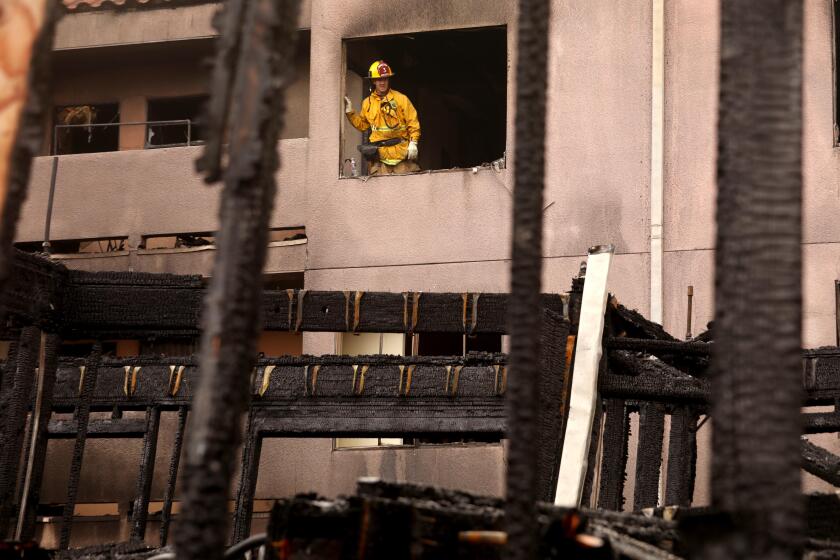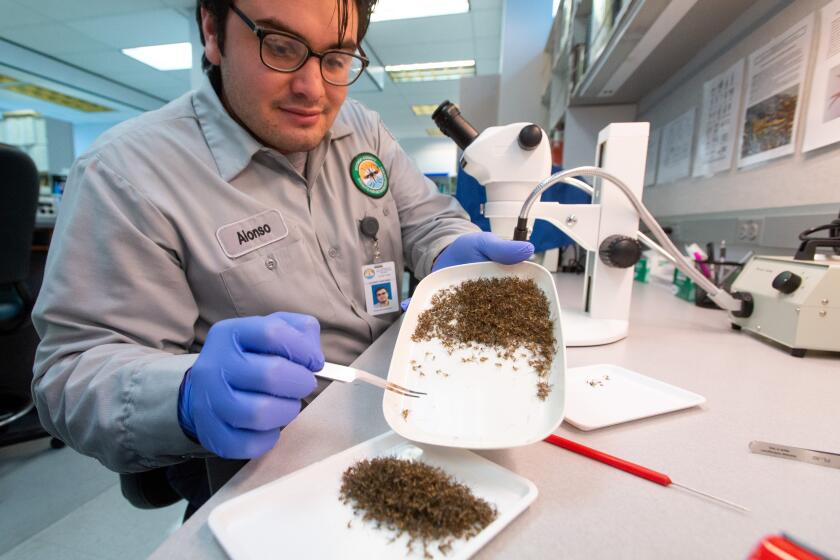Black History Parade Takes Turn
Orange County’s Black History Parade has been renamed the Multicultural Parade and Faire to broaden its financial support -- triggering debate in the African American community over whether the event has been culturally diluted at the expense of its soul.
Organizers say the name change also reflects the multicultural appeal of the 24-year-old parade while still highlighting the achievements and contributions of black people in America during Black History Month.
“I had to change [the name] because the people that embraced me, embraced the vision I had, that came forth with dollars” represented an ethnic rainbow, said the Rev. Willie Holmes, chairman of this year’s parade and a pastor of Majesty International Center, a nondenominational church in Fullerton.
Others say, though, that turning the parade into a multicultural event devalues what had made it distinctive.”It is as if the black community has become invisible,” said the Rev. John McReynolds, senior pastor of Second Baptist Church in Santa Ana. African Americans’ “cultural and racial distinctions have been absorbed into a cultural melting pot that has no value.”
Helen Shipp, a founding member of the committee that planned the first parade in 1980, said it always invited people of other cultures to participate, but said she was initially “ticked off” by the name change.
“For all those years, it was the Black History Parade,” she said. “Why change it now?”
Her attitude softened after the chairman explained the reasons for the change, she said. “There are times when you have to do certain things,” she said.
Experts in cultural and ethnic affairs said the renaming of a black history parade, though unusual, reflects the state’s increasing ethnic diversity.
“There are people who understandably feel that the shift from African American to multiethnic is to deflect deserved attention away from the specific experience of black people,” said Richard Yarborough, an African American professor of English and African American studies at UCLA. “The counterargument is we now live in a community where black people are no longer the largest group of [people of] color.”
Renaming the parade has raised eyebrows elsewhere.
“I thought the purpose of the parade is to celebrate African Americans’ heritage and contributions to society,” said Christine Harris, coordinator of Pasadena’s Black History Parade on Feb. 21. “If they are going to change it, perhaps they should look at doing it a different month, like October, which is Cultural Diversity Month.”
Holmes said he was sensitive to concerns about the name change, but “that’s the dream of the Rev. Dr. Martin Luther King -- that we walk hand in hand.”
The parade and fair have embraced other cultures for years, he said, and this year “we wanted it to be a joint effort for everybody in the community.”
Rather than criticize the name change, he said, people should be relieved that the event has survived the loss of its original sponsor.
Until this year, the Santa Ana Parks, Recreation and Community Services Agency had provided more than $25,000 annually for the parade. Support was dropped this year because of budget constraints, said Lorraine Lazarine-McCarty, community affairs manager.
A parade committee veteran, Holmes has spent his first year as chairman raising private funds for the parade. “There were more doors that slammed in my face than opened,” he said, because charitable giving is down. By broadening the parade’s appeal, he believed more money would flow.
He and others raised more than $23,000 from sponsors such as First American Title Co.’s Financial Foundation, South Coast Plaza, Crevier BMW, Orange County’s 100 Black Men and 100 Black Women, and Citibank.
This year’s parade, with the theme “Let the Liberty Bell Ring,” will feature a float called Unity First with representatives of the NAACP, the city of Santa Ana, the American Palestinian Congress and representatives of Latino and Jewish organizations, Holmes said.
Parade dignitaries also represent an ethnic mix. Webster J. Guillory, the county assessor and an African American, is the grand marshal. Others being honored are Rep. Loretta Sanchez (D-Santa Ana) and Vietnamese businessman Ken Nguyen.
While the mix promotes ethnic harmony, critics say it downplays the rich cultural, political and economic contributions of African Americans that are usually highlighted during Black History Month.
Holmes said past grand marshals have included athletes Tiger Woods and Florence Griffith-Joyner, and Yolanda King, the civil rights leader’s daughter.
Altering the parade’s focus is “tragic,” said Robin D.G. Kelley, a professor of history and African American studies at Columbia University. “It seems to be another example of collapsing all nonwhites into one broad category.”
The debate over the name change is no less intense for the relatively low profile African Americans have historically had in Orange County.
African Americans accounted for 1.7% of the county’s population in 2000, according to census figures.
Even with a small base, the parade has consistently drawn an interracial audience of about 10,000 people, organizers said. But over the years, the crowds have thinned.
“In the civil rights movement [of the 1960s] you had Jews, Christians, Native Americans, all walking arm in arm,” said Councilwoman Alberta Christy, an African American who supports the name change. “So how can you not acknowledge it took all of us to make the civil rights movement?”
Holmes said that next year’s parade may strike a compromise.
“I believe that we will go back to it being called a black history parade,” he said, “but I believe it will be something like the Black History Parade of Orange County Celebrating Multiculturalism.”
The parade begins at 10 a.m. Saturday at Washington Avenue and Broadway and heads south on Broadway to Civic Center Drive, west to Flower Street and south to the parade route end.
More to Read
Sign up for Essential California
The most important California stories and recommendations in your inbox every morning.
You may occasionally receive promotional content from the Los Angeles Times.










